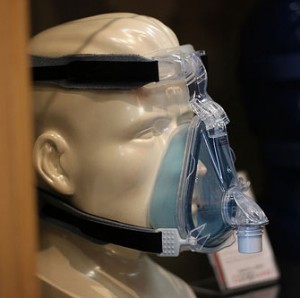Central Vs Obstructive Sleep Apnea
What’s the difference between the two?
Perhaps one of the most confusing aspects about the sleep disorder known as sleep apnea is what exactly distinguishes the different kinds of sleep apnea from one another. Effectively, the result is the same. Low oxygen flow into the blood stream due to a breathing problem, and prolonged periods where breathing stops during sleep.
While both Obstructive Sleep Apnea and Central Sleep Apnea can result in serious medical complications, even death in rare circumstances. Their etiology (causes and origins) are very very different. There are a number of ways you can distinguish between the two.
- Central Sleep Apnea (CSA) sufferers often do not snore
The number one symptom associated with Obstructive Sleep Apnea is snoring. Most anti-snoring devices are targeted toward individuals who snore on a casual basis, or are suffering from OSA. Just because you snore does not mean you can’t have CSA, and just because you do not snore doesn’t mean you can’t have OSA but we are talking about common threads in this circumstance.
The reason CSA suffers often don’t suffer from snoring is because Central Sleep Apnea is caused by a neurological malfunction (hence the name central = central nervous system). Whereas, OSA is caused by a physical obstruction in the suffer’s airway. Without any physical obstruction there will be no vibration in the soft tissue and thus no snoring.
 Central Sleep Apnea is much less common than Obstructive Sleep Apnea
Central Sleep Apnea is much less common than Obstructive Sleep Apnea
The lowest estimates determine that about 5% of Sleep Apnea causes involve Central Sleep Apnea. On the other hand, some estimates range to upwards of 20% of all sufferers. Complicating things even further, some researchers have observed a strange phenomena where cases of CSA seem to resolve themselves without any outside intervention.
If you suspect that you have sleep apnea, the odds are overwhelming that you probably are struggling with Obstructive Sleep Apnea.
For reasons unclear to many, those suffering from CSA experience a neurological malfunction where the brain does not send the proper signals to the muscles involved with respiration. For this reason, you stop breathing at night. CSA is much more difficult to treat in this respect.
OSA on the other hand can be alleviated with surgery, stop snoring mouthpieces, or other anti-snoring devices. Thankfully, as a general rule neurological malfunctions are much rarer as a whole throughout the human health spectrum. Though, if you are suffering from CSA not all hope is lost.
- Both CSA and OSA are highly treatable, but OSA is curable
Central Sleep Apnea, as well as Obstructive Sleep Apnea can be treated with a CPAP or BiPAP machine. These machines aid in respiration and make it easy for you to breath.
Even if your brain fails to send the proper signals to your muscles for your to respire the CPAP or BiPAP will force pressurized air in and out of your lungs essentially breathing on your behalf. Brain disorders are much more complex and difficult to treat than purely physical disorders.
There are a number of surgeries available that can remedy a physical obstruction, and even exercises that can help solve the problem. Unfortunately, there is no known surgical procedure at this time that can cure CSA.
- The two aren’t always mutually exclusive.
It’s important to remember that just because you snore doesn’t mean you have OSA. Further, both sub-categories of sleep apnea sometimes manifest into a third category known as Mixed Sleep Apnea. In this case OSA, and CSA can occur simultaneously and special care needs to be taken to ensure that your treatment is effective for both.




